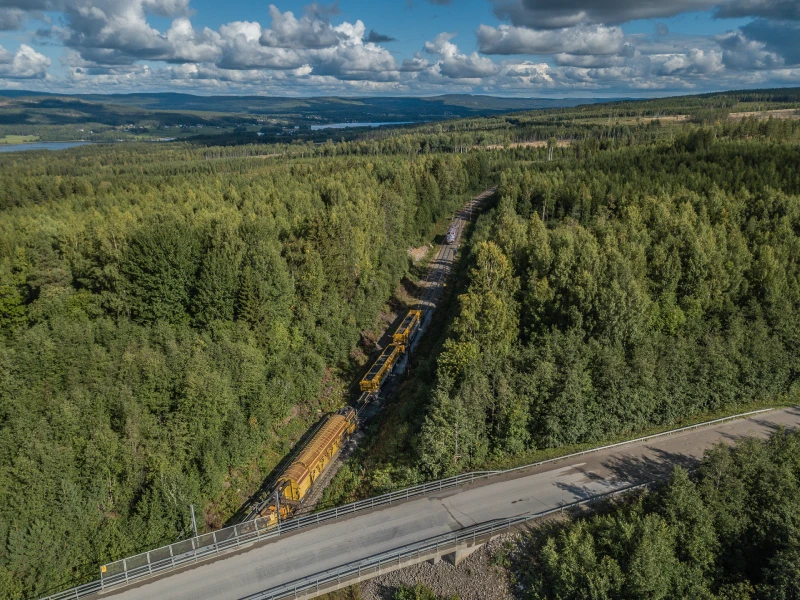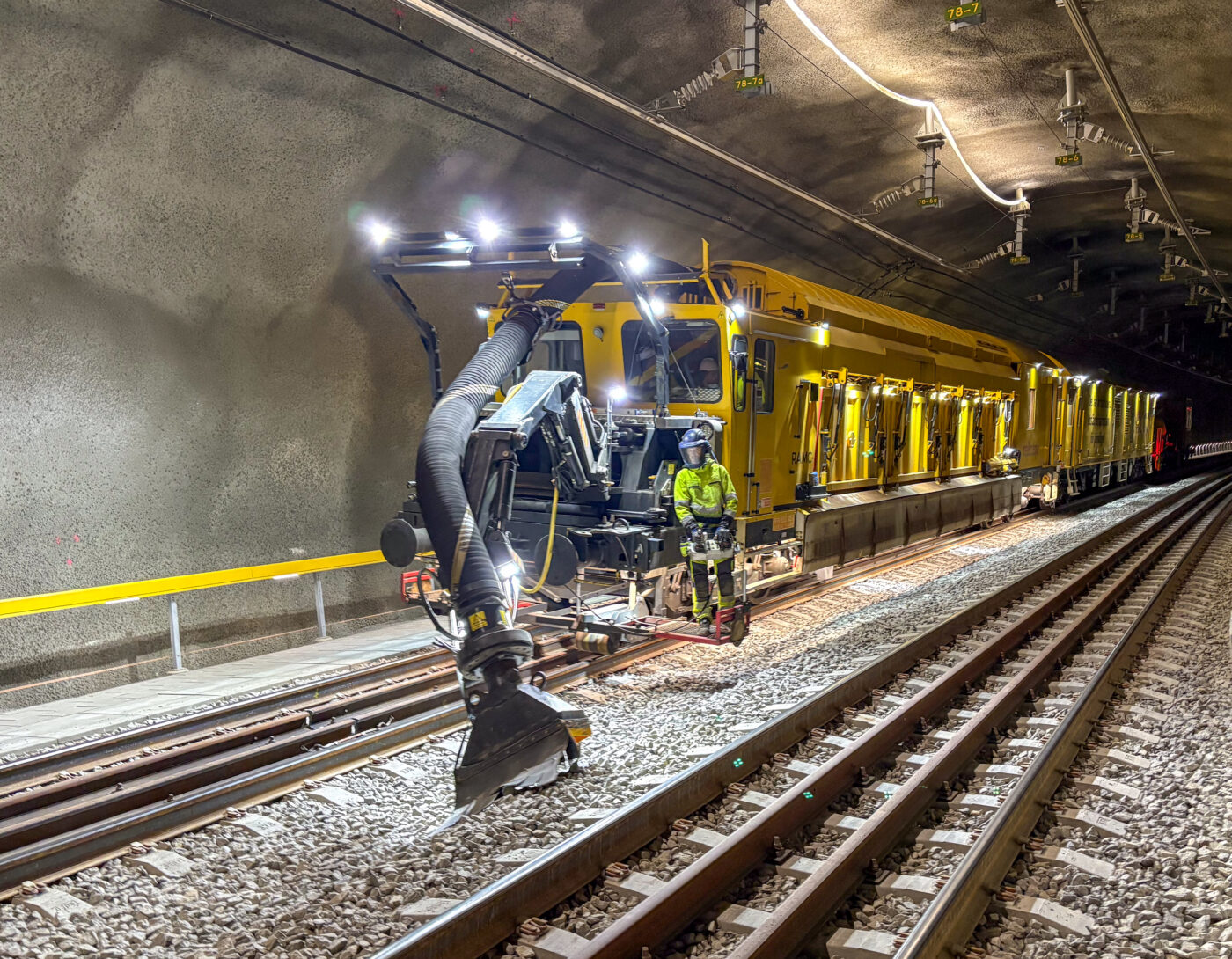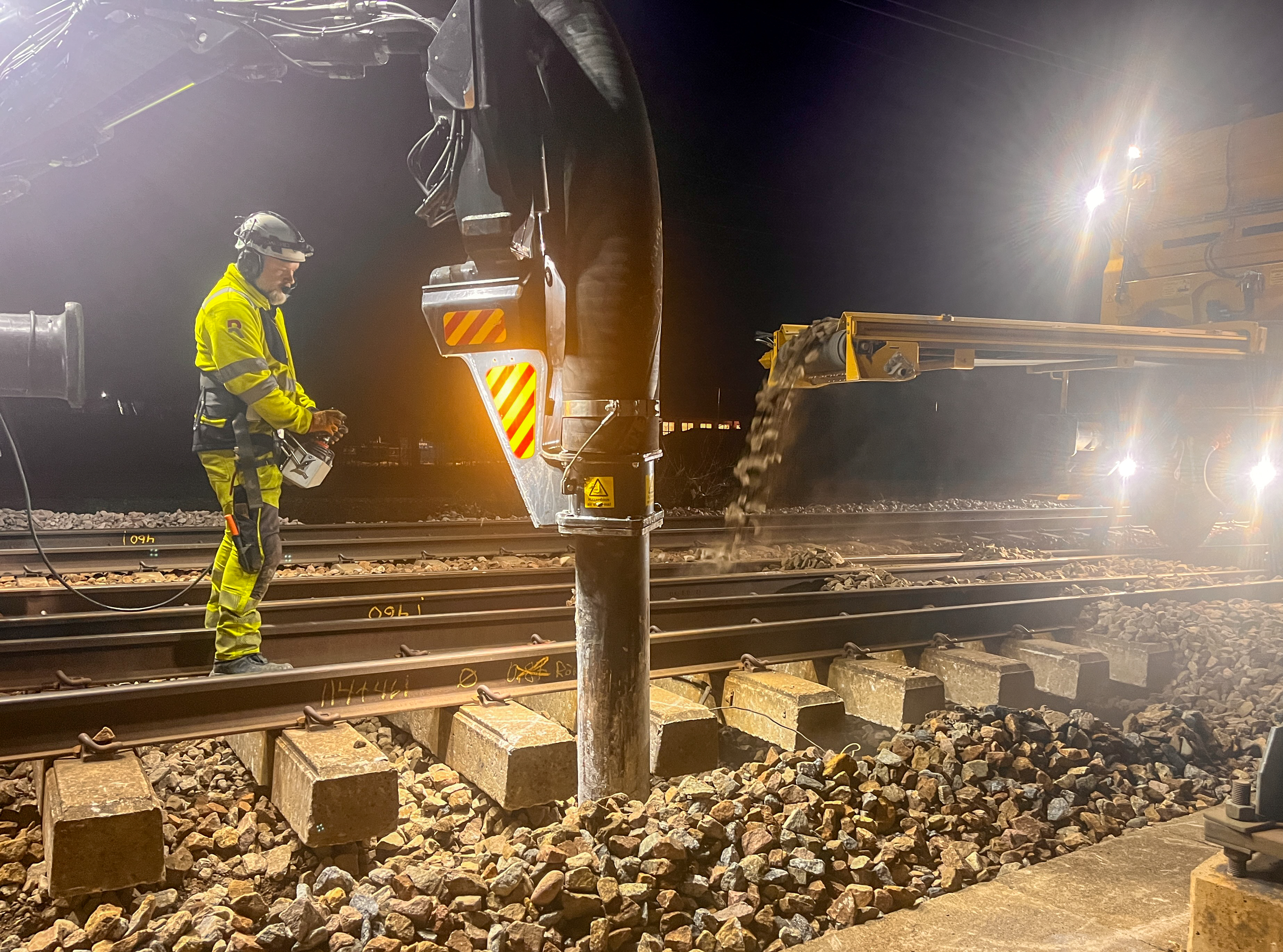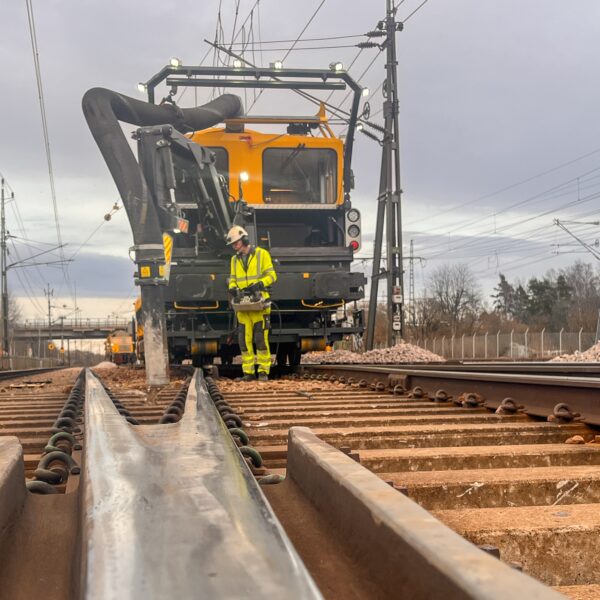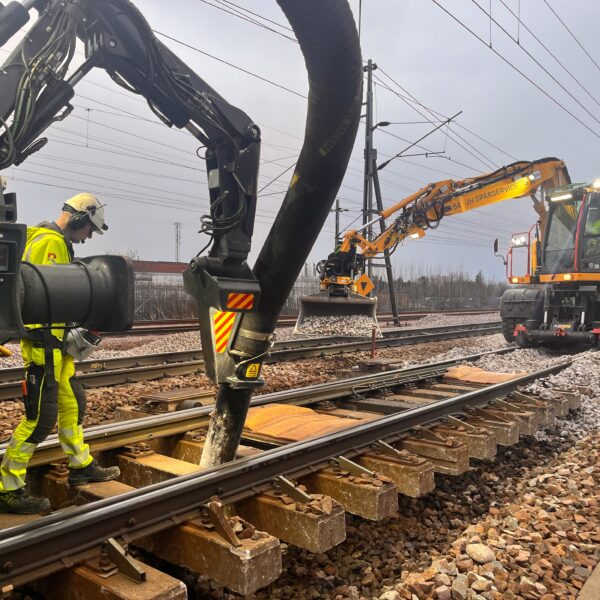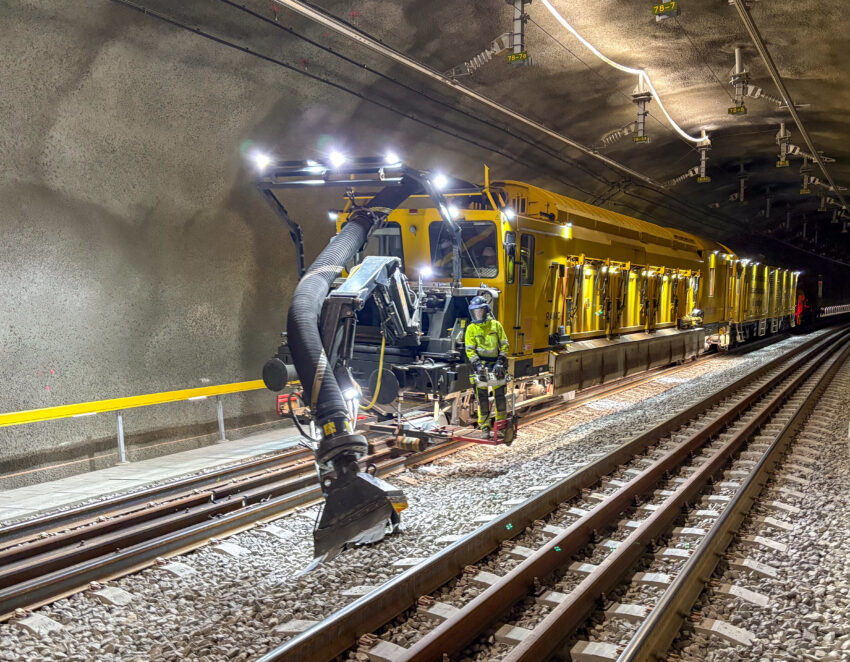Railcare is carrying out a major project on behalf of Trafikverket on the Västerås-Ålsäng and Kolbäck-Eskilstuna routes. Within the project, ballast replacement will be carried out on a total of 24 bridges and 18 switches, where Railcare performs the work with its self-developed machines and dedicated staff.
– Thanks to the framework agreement, we have been able to involve Railcare early in the planning. In this way, they can get the right conditions and opportunities to solve most of the work on their own, says Johan Paby Söderkvist, Project Manager at Trafikverket Investment.
The ballast replacement project is preparatory work for a track replacement to be carried out in 2025 and 2026. By completing the bridges and switches now, the larger track replacement will also flow better. The project is expected to be completed in May, by which time a total of 24 bridges and 18 switches will have received new ballast, increasing the stability and reliability of the track.
– This project has demonstrated our ability to carry out efficient rail maintenance. From the careful planning phase, where we laid the foundations in close collaboration with all parties involved. To the execution where innovative machines and dedicated employees delivered the result, says Daniel Bolin, Operations Manager for Railcare’s contracting business.
Several operations are performed simultaneously, like a pit stop
Railcare’s vacuum machines are used to excavate the existing ballast, followed by material wagons that with precision fill the track with new ballast. Track alignment is then carried out by Infranord, which is the subcontractor. All work is performed at times when there are no trains, which means that traffic is affected to a lesser extent.
– The advantage of the method used by Railcare is that it becomes a bit of an assembly line, and by performing several steps at the same time, we save time. Thanks to the vacuum technology, we do not have to remove the track. We also avoid the risk of damage and can inspect and assess the condition of the bridges, says Johan Paby Söderkvist.
Macadam reused
Another success factor in the projects has been the reuse of macadam, with an impressive 80% of the material being reused. Screening macadam is an efficient way to utilise material that would otherwise be discarded. The process allows the substandard material to be filtered out, leaving high-quality ballast.
– Reusing macadam is not a common practice due to the large volumes and logistics involved. In this project, however, we have managed to plan a practical implementation, thereby conserving resources and reducing the project’s environmental footprint, says Daniel Bolin and concludes:
– The cooperation and planning together with Trafikverket and other parties have worked very well, both on and off the track, which has meant that the project has progressed according to plan.
